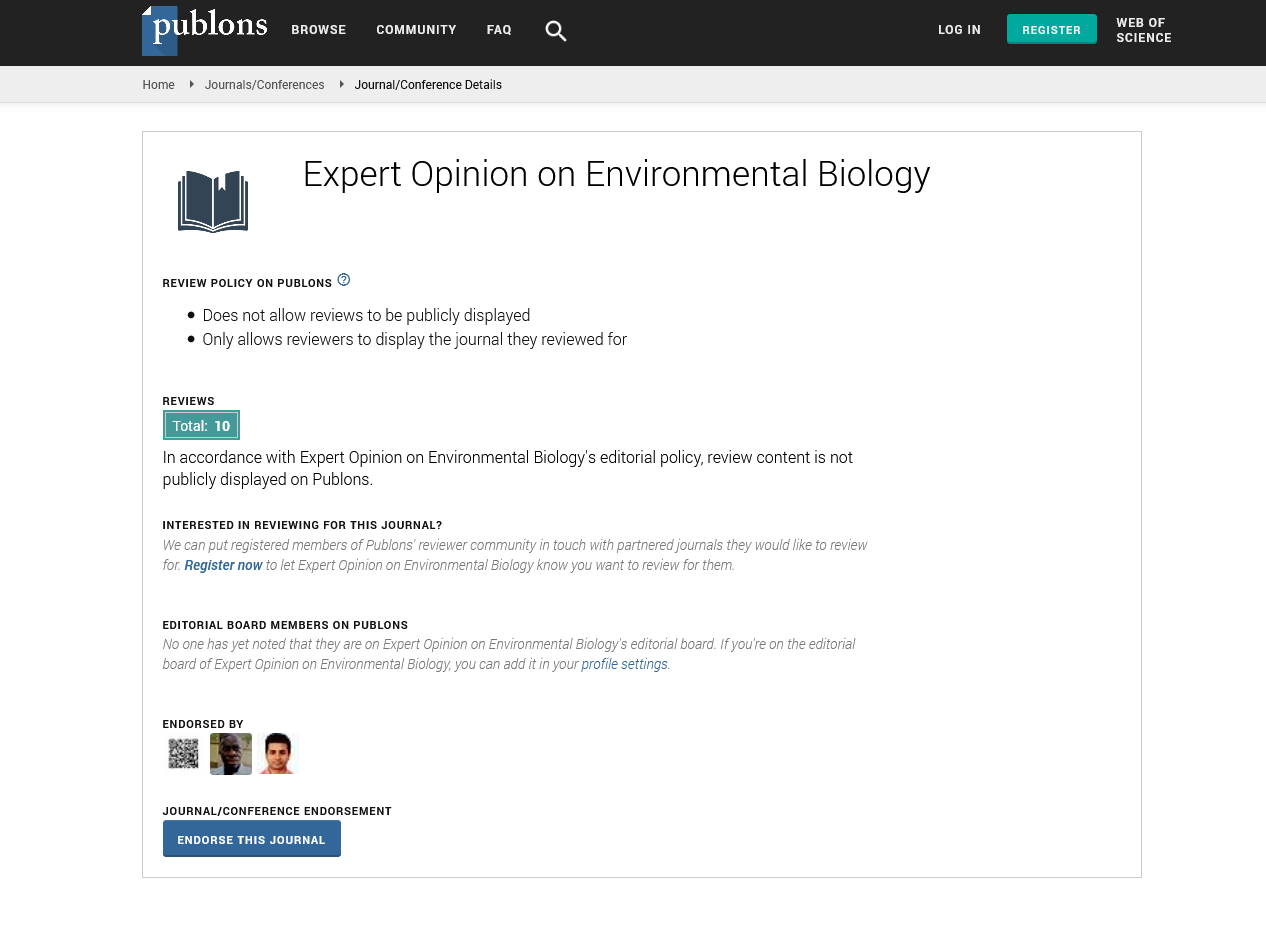Borehole climatology: a useful tool for recent climate reconstruction
Vladimir Cermak
Institute of Geophysics-Czech Academy of Sciences, Czech Republic
: Expert Opin Environ Biol
Abstract
Thermal regime of the Earth’s continental crust to the depth of few kilometers comprises the superposition of two conductive processes: steady-state outflow of heat from the deeper interior and the transient perturbations corresponding to the changes in the surface conditions. Temperature changes at the surface, commonly climatological in origin, propagate downwards with amplitude attenuation and time delay which both increase with depth. Underground temperature field has a robust memory on what has happened on the Earth’s surface in the past. At shallow 100 m, we can found traces of one or two last decades, depth interval of one kilometer can reveal ground surface history of the last several hundred years. Inversion of the precise temperaturedepth profiles can provide important evidence and helps in climate modeling. This relatively new and handy technique well proved to be a useful alternative tool in paleoclimate reconstruction. The presentation introduces the history and principle techniques. Special attention focuses on advantages and disadvantages. While inconspicuous recollections in the underground temperature field may correspond to the post-glacial warming of up to 8-10 degrees, 10-14 ky ago, documented borehole data clearly confirmed climate excursions in the past millennium, namely the medieval climate optimum (four to six hundred year ago) and the Little Ice Age in the 18/19th centuries. Pronounced traces of the recent climate warming are common in many temperature records, evidencing a world-wide increase by up to several degrees in mean surface temperature in the last 100 years. As the mean air temperature and the ground (soil) temperatures are in principle different, the ground surface temperature reconstruction can reveal a number of other interesting events, such as e.g. massive deforestation, changes in land use; affect of irrigation and eventually also the potential anthropogenic component in the present-day warming and its geographic distribution.
Biography
E-mail: cermak@ig.cas.cz
 Spanish
Spanish  Chinese
Chinese  Russian
Russian  German
German  French
French  Japanese
Japanese  Portuguese
Portuguese  Hindi
Hindi 
